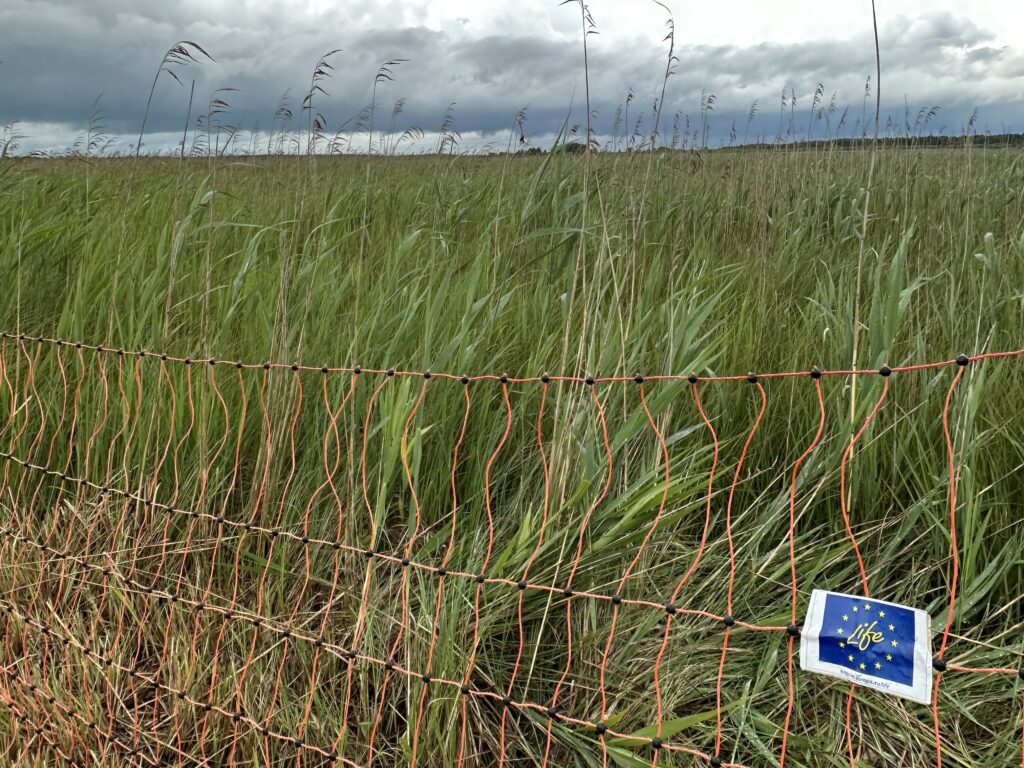
Blog: First encounter with Aquatic Warblers in Lithuania
-
AWOM
-
Biodiversity - Flyways
By Valeria Numbela, Project manager of LIFE AWOM.
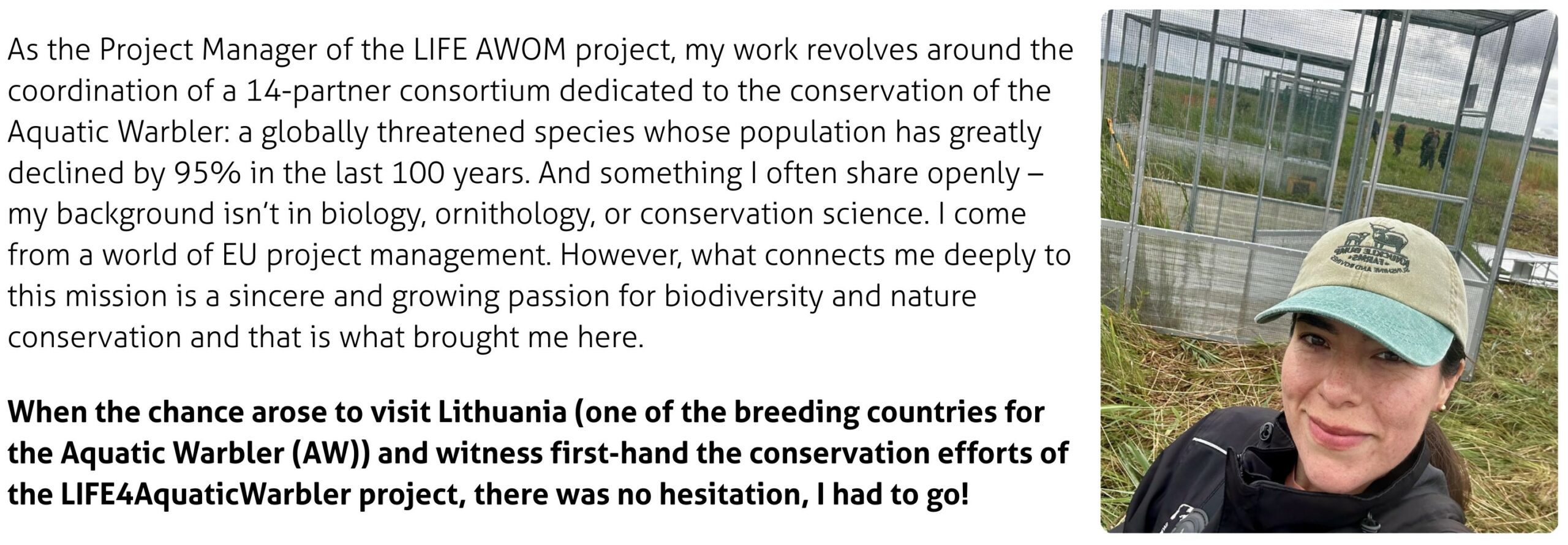
Full-time feeding frenzy
June 24th, 2025:
So here I am, on Day 1 of the AW translocation process at the Žuvintas Biosphere Reserve. The nests of AWs have already been located and moved into small, specially designed cages here at Žuvintas. While I haven’t yet visited the aviaries at the second site, I know that more AWs are being cared for there as well. In total, the LIFE4AquaticWarbler team has been able to find 57 chicks.
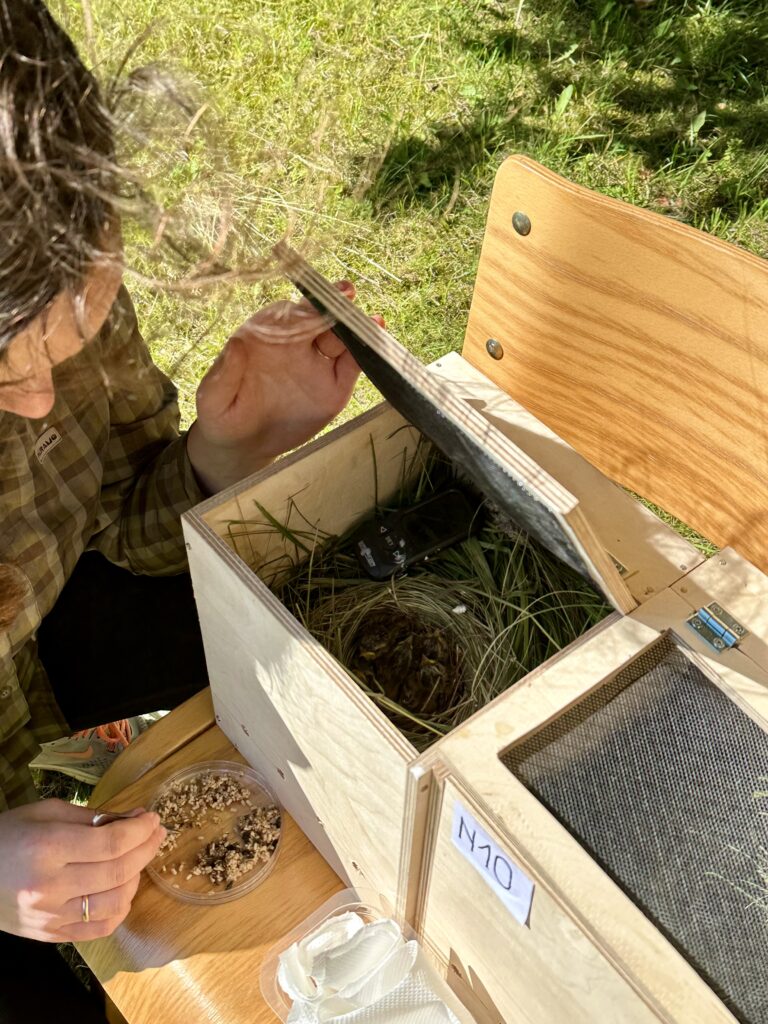
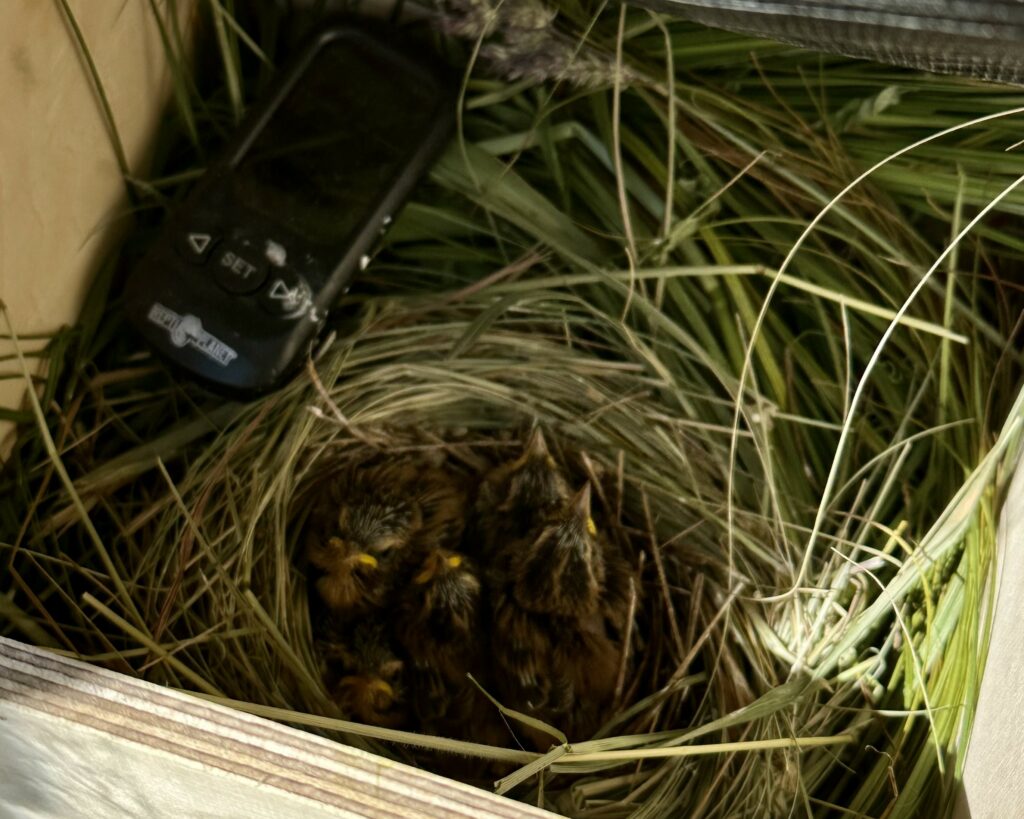
At Žuvintas, the team’s focus is on one critical task: feeding the birds, something that is far from simple. First, we set out with insect nets into the nearby fields to collect as many bugs as we can. These are then frozen for 24 hours to ensure safe handling and once frozen, we sort through the “pile”, separating useful ones such as flies, crickets, spiders, and worms – the AWs favorite nibbles!
Another delicacy for the birds? Ant eggs. These, too, must be carefully sifted from leaves, twigs, and dead ants. It’s meticulous but important work because feeding these tiny, vulnerable birds is what matters greatly at this stage.
Feeding begins at 5:00 AM and continues until 10:00 PM and the birds are fed every 15-20 minutes – yes, you read that right. Only trained, experienced staff members are allowed to do this as it’s a delicate job requiring precision and calm to avoid stressing or losing a bird.
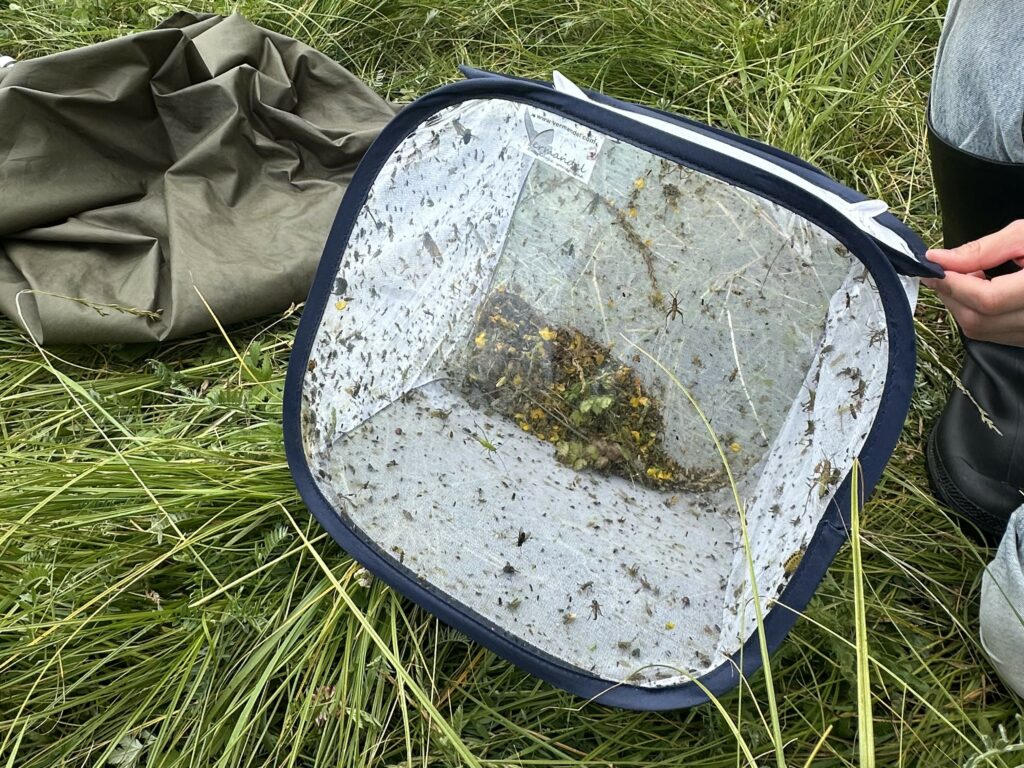
One of the most surprising and heartwarming things I witnessed today was the birds’ reaction to the feeder. It almost seems like they recognise the person approaching and begin chirping loudly in anticipation; once fed, they quiet down. Their personalities really shine through and while it might sound a little “silly,” it’s truly touching. These aren’t just tiny brown birds – they are really characters in their own right.
Adding to the atmosphere, there’s a speaker playing bird songs throughout the day, likely to help the birds adapt and feel at ease.
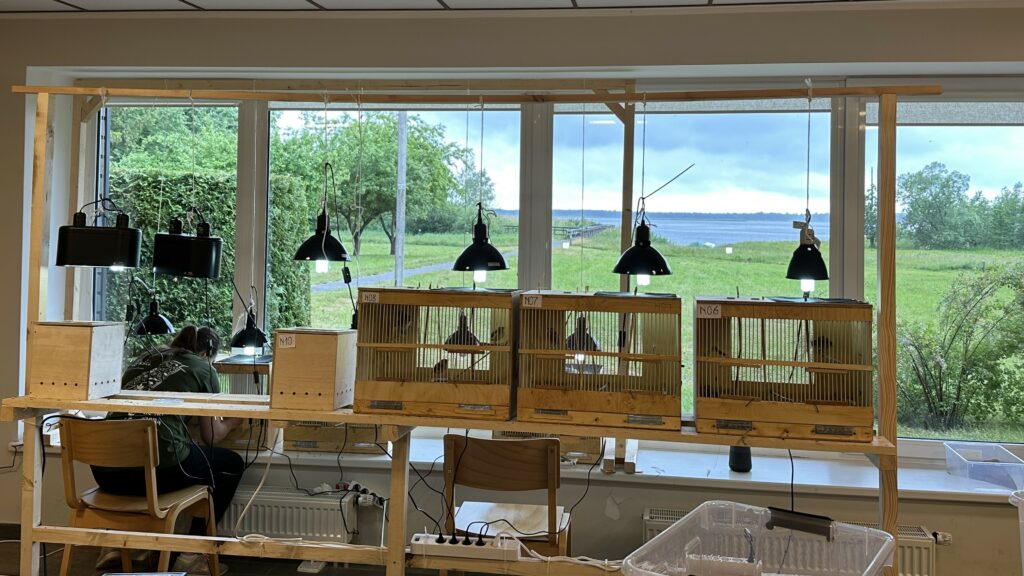
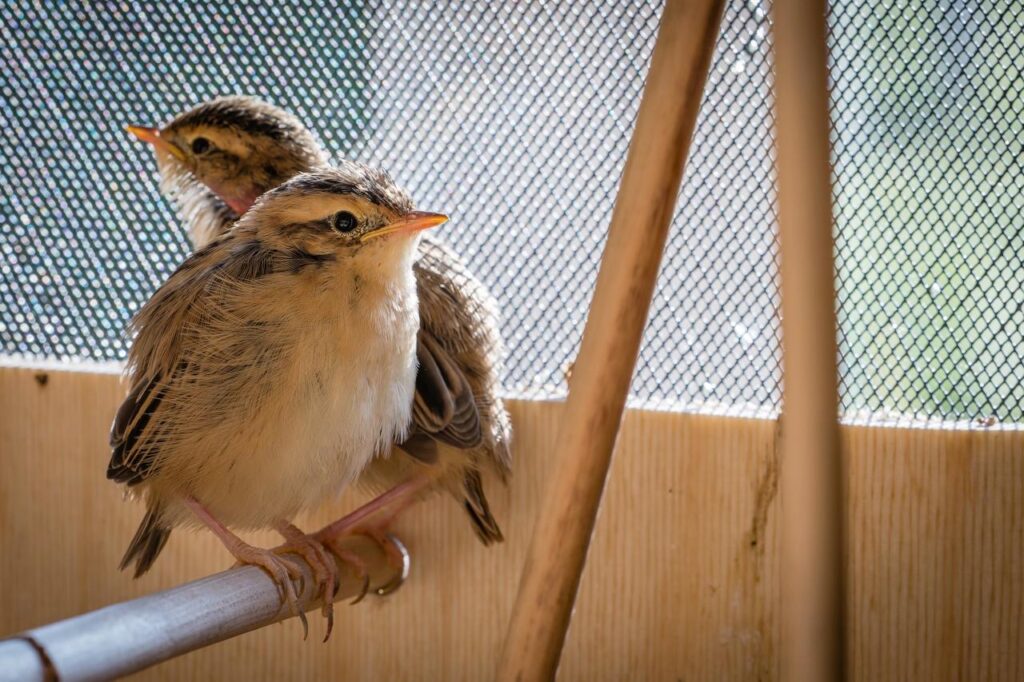
Once 10:00PM hits, the birds go to sleep and so do we!
June 25th, 2025:
Day 2 brought more of the now familiar feeding frenzy, but it also marked a shift in the experience and I had the opportunity to visit to the second site, where the aviaries are located.
And it was here that something very exciting happened: I saw my first Aquatic Warbler in the wild!!
With the help of Žymantas (Project Manager of the LIFE4AquaticWarbler project), who recognised the AW’s distinctive song, I was able to spot one AW among the reeds – what an exciting moment! Don’t get me wrong, although I also heard it singing, it was a tricky thing to spot him with the binoculars but after some attempts, there he was!
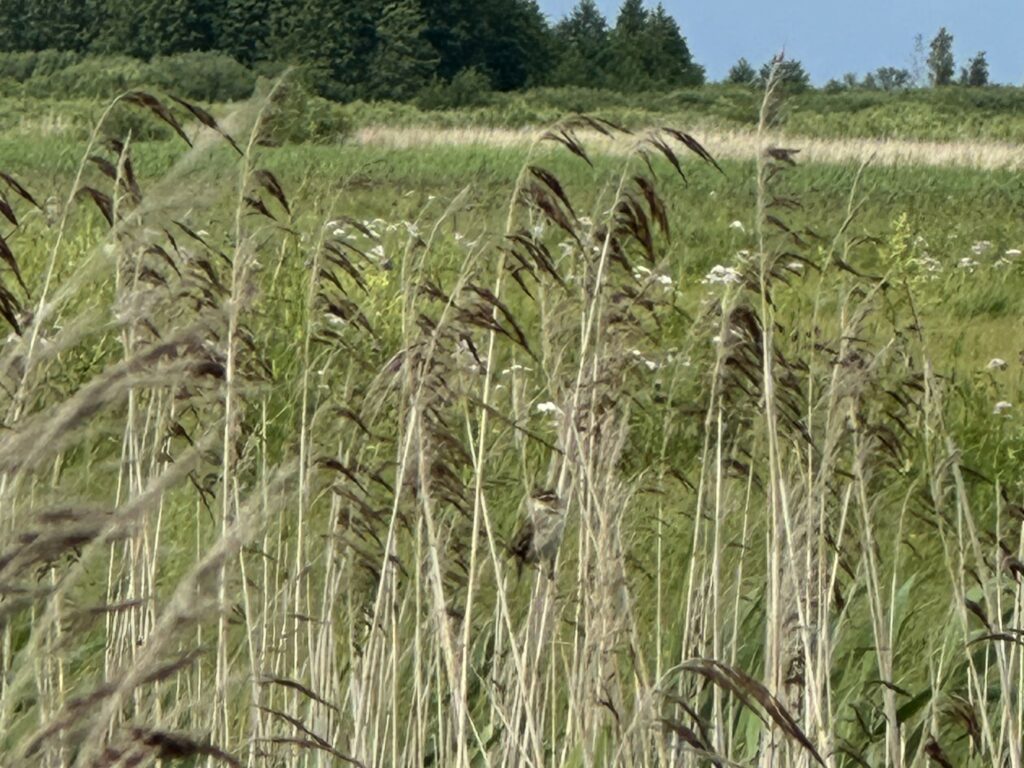
Later, while walking through the area on my own, I heard that familiar call again and this time, I was able to spot the bird entirely on my own. A small moment, maybe, but a proud one for me!
During the visit to the aviary site, I got to learn much more about the translocation process, how the birds are carefully moved from one place to another as part of efforts to strengthen and protect the breeding population.
So here it goes: the team has installed 11 aviaries, which serve as the ‘final stop’ before the Aquatic Warblers are fully released into the wild. Put simply, once a nest is found, the birds are carefully placed into a small box and transported to Žuvintas. When they’re ready, they’re moved into a larger box. Next, they are taken to the aviaries, where the box is opened, allowing the AWs to start flying freely within the aviary. From there, they undergo a gradual and careful release into the wild. Translocation in a nutshell!
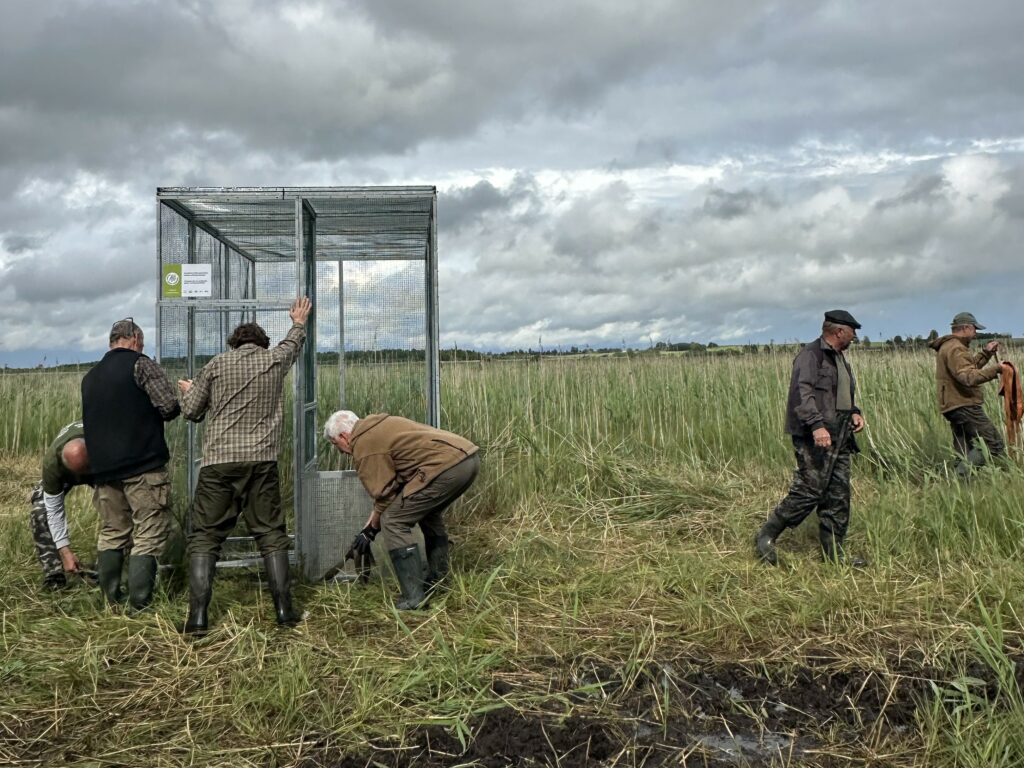
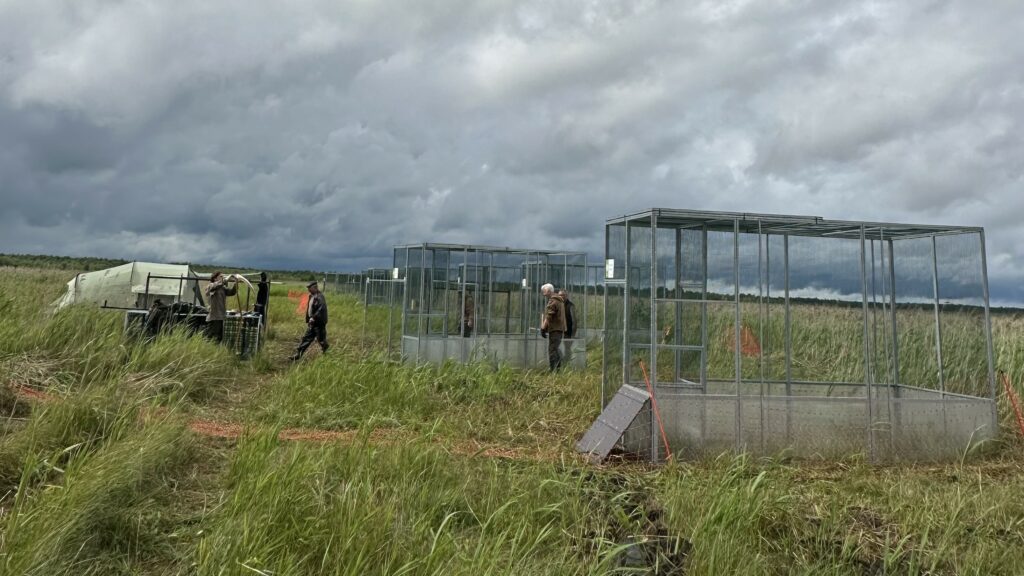
The day wrapped up with a deep-dive presentation on the LIFE4AquaticWarbler project and the history behind the work of the Baltic Environmental Forum (BEF) team and other partners involved in the conservation of the AW.
From hands-on feeding to spotting birds in the wild, and then zooming out to understand the bigger conservation picture, it was a day full of learning.
June 26th, 2025:
Another special day in the field and this time, the weather was on our side! The sun finally came out, which meant a little sunshine therapy for everyone… including the AWs. Their boxes were taken outside so they could soak up some vitamin D and breathe in the fresh air.
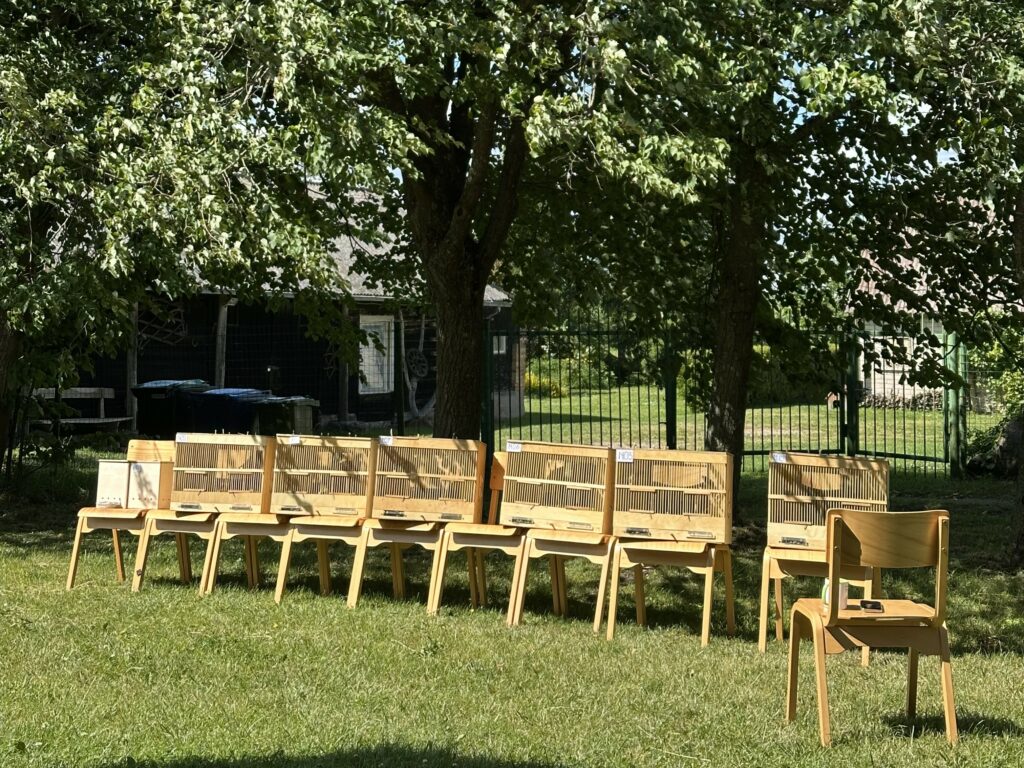
The morning was all about food: sorting it and collecting it down in the field with an insect net. It’s a hands-on job, and there’s something oddly satisfying about knowing that the effort you put in directly supports these little birds.
However, the major highlight of the day came in the afternoon. One of the AW boxes was ready to be moved to the aviaries and I had the honor of carrying it! Five Aquatic Warblers, tucked safely inside, entrusted to my care for the short walking trip from the car to their new temporary home.
For someone who hasn’t been this close to a bird, let alone a threatened species like the AW, I can say it was equal parts exhilarating and nerve-wracking. All I could think was: Don’t trip. Don’t drop the box. Don’t scare the birds. Thankfully, we all made it in one piece!
At the aviaries, some AWs were already flapping about, adjusting to their surroundings and even beginning to “hunt” for food on their own (well, almost.. the expert still placed insects on the ground, but still, it’s a start).
Later in the day, we got back to food prep, with a special focus on sorting ant eggs as they are packed with protein, and perfect for a nutritious meal for the AW.
June 27th, 2025:
Today marks my last day at the Žuvintas Biosphere Reserve, and with it, the end of my short but meaningful time with the team and the Aquatic Warbler translocation process. I say “short” because, while I’m heading home, the incredible BEF team and remaining volunteers still have many long days of work ahead. Their dedication and perseverance are truly inspiring.
Unfortunately, the weather was not on our side as there were strong gusts of wind and rain, this meant we had to stay indoors. So, we returned to one of the most important (and surprisingly meditative) tasks: sorting insects and ant eggs. After several days of doing this, I must admit… they almost started to look appetising. Almost. (Just kidding!)
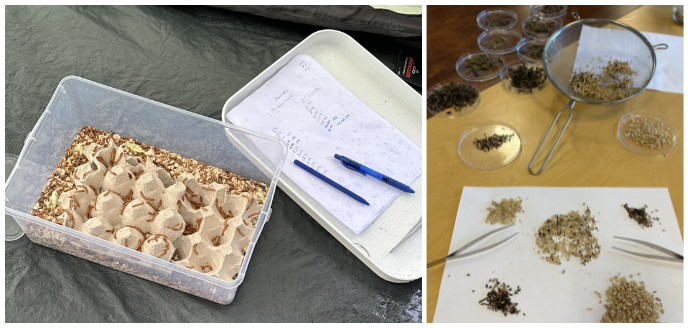
As I wrap up my time here, one thing stands out beyond the round-the-clock care given to the Aquatic Warblers: the sense of community among the people doing this work. While one or two team members focus on feeding the birds, others are sorting food, someone is preparing a shared meal, another is cleaning the kitchen, and someone else is drying the dishes. Everyone contributes in their own way, not just to conservation, but to supporting one another during these busy and intense days.
And that brings me to my final thoughts…
The people behind the project
There are dedicated volunteers alongside BEF staff who are working on this process. I’ve learned that this entire translocation and acclimatisation process spans about two months or a bit longer – from early June to mid-July, not including the time the BEF team spent searching for the nests (which started 20 May). The amount of energy, care, and dedication it takes is very inspiring.
As someone working in the LIFE AWOM sibling project, being here has been both humbling and enlightening. It’s one thing to manage the logistics and funding, but seeing the daily work on the ground brings a whole new perspective. It’s not just about saving a species “on paper” but it’s also about real people putting in real work to protect the Aquatic Warbler.
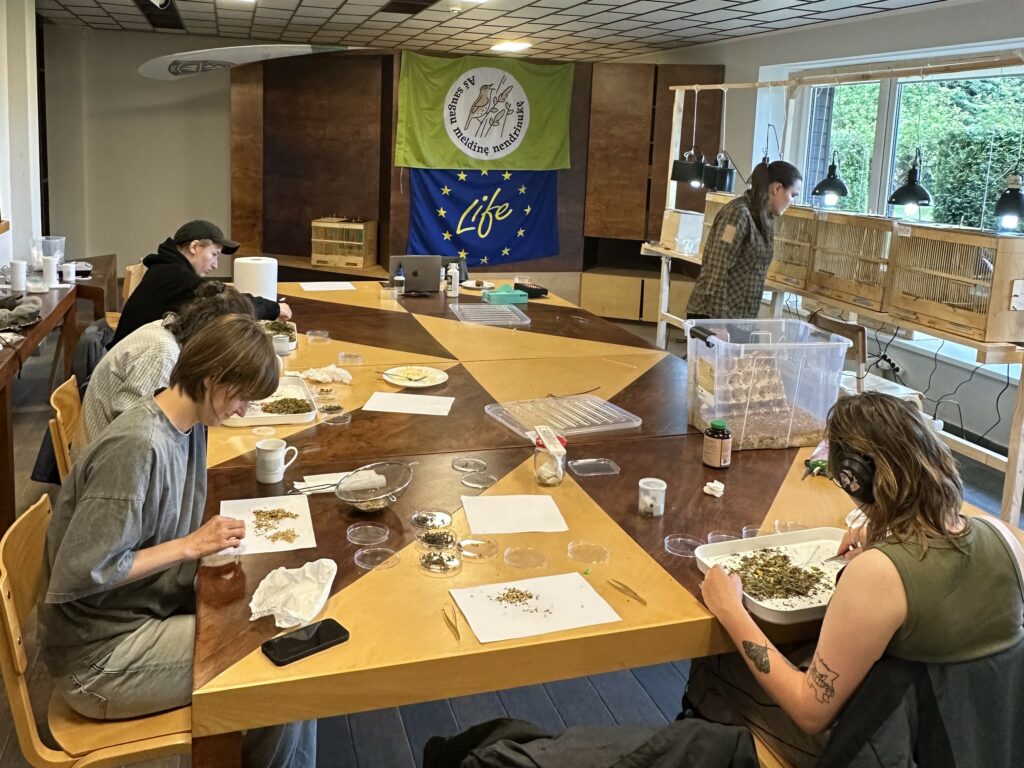
For me, this experience has underscored something very personal: you don’t have to be a scientist or technical to contribute meaningfully to conservation (not to say that their work is not important, it is – it’s indispensable!). Passion, curiosity, and the willingness to learn go a long way. Watching this threatened species up close has only deepened my commitment to safeguarding its future, not just through project management, but as an advocate and a person who cares.
The Aquatic Warbler may be a tiny bird, but the efforts behind its survival are massive and through this experience I was lucky enough to be a small part of that.
My lasting impressions: every step matters for the Aquatic Warbler
The breeding season will soon draw to a close, but the story of the Aquatic Warbler is far from over – and this is where the LIFE AWOM project steps in.
Soon, these tiny birds will begin their incredible journey: From the wetlands of Lithuania (amongst other breeding sites), crossing into Belgium, then down across the Atlantic coastline of France, then through the whole width of the Iberian Peninsula, to the Moroccan coastline, and eventually to their wintering grounds in Sub-Saharan West-Africa.
I am now left wondering: what are the chances that one of the birds I encountered in Lithuania might pass through the hands of a LIFE AWOM bird ringer hundreds or even thousands of kilometers away? Who knows… but witnessing the efforts behind their conservation highlights something deeply important: the vital role of staging sites – the migratory “rest stops” where AWs rest and refuel.
Imagine a bird that’s successfully bred, full of energy and ready for a long journey. But as it travels, it finds stopover sites degraded. How can it continue its flight across the Sahara without the chance to properly rest and recharge? In order for this small bird to perform such a journey, the availability, quality, and distribution of resting and foraging sites are crucial.
This is why the work of projects like LIFE AWOM and LIFE4AquaticWarbler is so critical. These initiatives are giving the Aquatic Warbler one last shot at recovery. From breeding grounds to flyways to wintering areas, everything is connected and every site matters.
As someone who is somewhat of an optimist, I’m hopeful. The dedication of those who’ve worked on this species for years, combined with the dedication of those just discovering it, makes me believe we can turn things around. The birds will soon be on their way. We need to be ready.
All hands on deck, let’s get to work!
